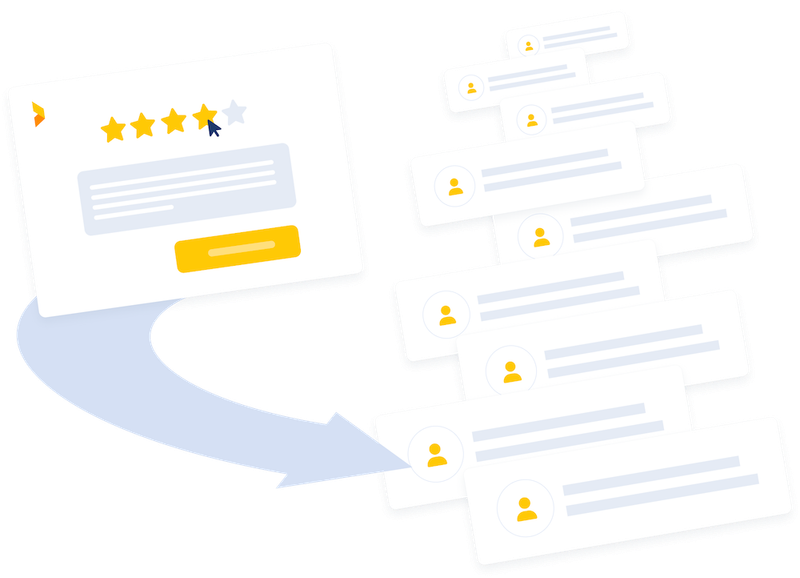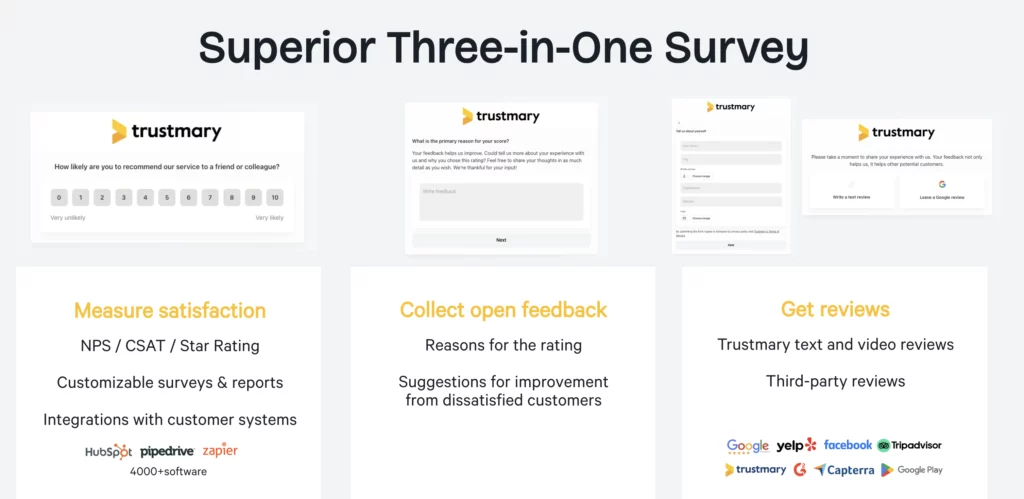Design Surveys People Love to Answer


Creating surveys that people actually enjoy answering can significantly boost your response rates and provide you with valuable insights.
Whether you're gathering customer feedback or conducting market research, the design of your survey plays a crucial role in its success.
Let's dive into some essential tips and best practices for designing engaging surveys that yield high-quality data.
Set Clear Goals
Before you even start drafting your survey questions, it's vital to have clear objectives.
Ask yourself: "What do I hope to learn from this survey?"
Defining your goals helps you stay focused and ensures that every customer feedback question serves a purpose.
For instance, if your goal is to understand customer satisfaction, make sure your questions are geared towards measuring their experiences and opinions.
Pro tip: Create qualitative surveys that also collect quantitative data! More from general questions to specific questions.
Different Survey Design Types
After defining your goal, decide on what type of survey design you'd like to use.
Survey Design Type Examples
- NPS (Net Promoter Score) Surveys: Measure customer loyalty by asking how likely they are to recommend your business to others.
- CSAT (Customer Satisfaction) Surveys: Gauge customer satisfaction with a product or service.
- Star Rating Forms: Simple rating scales using stars for quick feedback.
- Video Reviews Forms: Collect video feedback from customers, which can be used for testimonials.
- Google Review Forms: Encourage customers to leave reviews on Google to enhance your online presence.
Customize Survey Design
When creating online surveys, it's important that your audience understands who is sending the survey.
Therefore, focus on making the survey look like your brand!
Survey Features to Customize
- Colors used
- Logo
- Font used
- Tone of voice in survey email and question wording
- Thank you page
The right survey design will get you more responses because people will be able to recognize your brand.
– I have not seen before the kind of easy and visually neat surveys that Trustmary provides. They can easily be made to fit our brand. The process of giving feedback and reviews with Trustmary is so user-friendly and effortless that we get many times more responses with that than directly asking for Google reviews, says Jesper Eronen, CEO at Hohdepinnoitus.
Read the full case story of customer insight at the heart of growth.

Try our survey-maker, that'll help you nail those aspects. Furthermore, doing surveys will help you form a baseline for your customer experience design.
Effective Survey Design: 101
- Use logical order in questions
- Start with closed ended broad and general questions
- Let respondents use their own words by using open ended survey questions
- For longer surveys (more than 3 questions), use engaging questions such as dropdown menu options and video recording
- Test your survey process yourself to notice any flaws
Okay, those are just my two cents quickly explained.
Here is some more general advice to help you survey designers think like a pro!
Keep It Short and Simple
One of the primary reasons people abandon surveys halfway is because they are too long or complicated. Aim to keep your survey short and straightforward. Avoid unnecessary questions and focus on what's truly important. This helps strike a balance between the depth of information you need and the time commitment you're asking from your respondents.
Use Clear and Concise Language
Your survey questions should be easy to understand. Avoid using technical terms or other industry specific jargon that might confuse your respondents.
Instead, use plain language that is accessible to everyone. This helps in ensuring that respondents can answer accurately without spending too much time deciphering the questions.

Mix Question Types
Incorporate a variety of question types to keep the survey interesting.
- Multiple-choice questions
- Likert scales
- Open-ended questions
- Video
- Image uploading
Using different question formats can help maintain respondent engagement and provide richer data.
Offer Incentives
Consider offering an incentive to encourage participation. This could be a discount on future purchases, entry into a prize draw, or a small gift card. Incentives can significantly boost your response rates, but make sure they are appropriate and ethical.
In other words, reward all respondents, not just the happy ones.
Otherwise, you'll end up getting inaccurate answers.
Common Mistakes in Survey Design
Even with the best intentions, it's easy to fall into some common traps when designing surveys.
Avoid these at all costs to get high-quality survey responses.
Leading Questions
Leading questions suggest a particular answer and can bias your results.
For example, instead of asking,
- "How wonderful was your experience with our customer service team?"
You should ask,
- "How would you rate your experience with our customer service team?"
This avoids pushing respondents towards a positive answer.
Double-Barreled Questions
These are questions that ask about two different things at once, making it hard for respondents to answer accurately.
For instance, "How satisfied are you with our product quality and customer service?" should be split into two separate questions to get clear and actionable feedback.

Too Many Open-Ended Questions
While open-ended questions can provide valuable insights, too many of them can overwhelm respondents and lead to survey fatigue. It's best to use them sparingly and place them towards the end of the survey.
Not Pre-Testing Your Survey
Before sending out your survey to a larger audience, pre-test it with a small group.
This helps you catch any confusing questions or technical issues that might affect your response rate. Pre-testing ensures that your survey is clear, concise, and ready for your target audience.
Make Survey Design Mobile-Friendly
With more people accessing the internet via their mobile devices, it's crucial to ensure your survey is mobile-friendly. A responsive design that adapts to different screen sizes can make it easier for respondents to complete the survey on their phones or tablets.
Provide a Progress Indicator
Let respondents know how much longer they have to go with a progress bar or indicator.
This can help reduce drop-off rates as people are more likely to complete the survey if they know how much time it will take.
Follow Up
After the survey is completed, follow up with your respondents to thank them and share any key findings or actions taken based on their feedback.
This shows that you value their input and can encourage them to participate in future surveys.
Moreover, make sure you follow up with those who didn't respond! It might be that it slipped their minds. Ask at least twice.
Embrace Innovative Methods
Traditional customer surveys are becoming less effective as people grow tired of answering lengthy questionnaires.
Instead, consider innovative methods such as video testimonials and feedback tools.
Using video allows customers to express their thoughts more freely and can provide richer, more nuanced insights. Plus, it's more engaging and can lead to higher participation rates.
FAQ
What makes a good survey design?
A good survey design is clear, concise, and focused on specific goals. It uses a variety of question types, avoids bias, and is pre-tested for clarity.
How can I improve my survey response rates?
Keep your survey short and simple, use clear language, offer incentives, and make sure it is mobile-friendly.
What are common mistakes to avoid in survey design?
Avoid leading questions, double-barreled questions, too many open-ended questions, and not pre-testing your survey.
Why is it important to set clear survey goals?
Clear goals help ensure that your survey questions are relevant and focused, making it easier to gather actionable data.
How can I make my survey more engaging?
Mix question types, use a conversational tone, offer incentives, and provide a progress indicator.
How much do surveys cost?
Survey pricing differs between software. It can be based on:
- Monthly response limits
- Email limits
- Surveys created